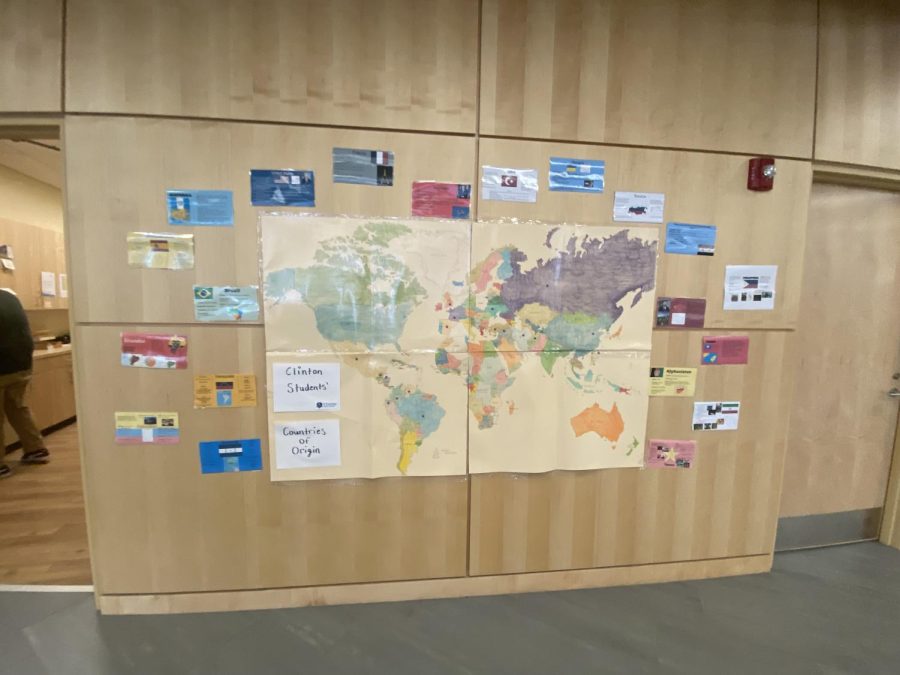Social Justice Club Country of Origin Campaign
Map Displays the Birthplaces of Students
The Social Justice Club recently hung a giant map next to Principal Keri Hagness’ office. The map has stars marking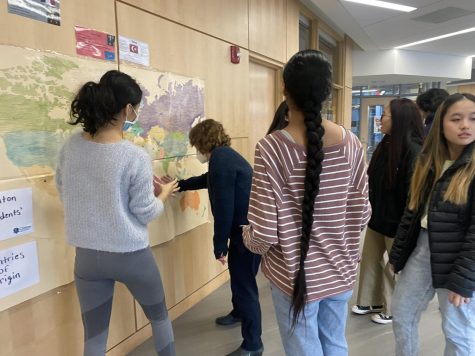 the birthplace of Clinton Public School students. The posters surrounding the map include the name of the country, flag, government leaders, religion, climate, tourist sites, primary languages, outline of the country, population, economy, and cultural symbols from that country.
the birthplace of Clinton Public School students. The posters surrounding the map include the name of the country, flag, government leaders, religion, climate, tourist sites, primary languages, outline of the country, population, economy, and cultural symbols from that country.
Assistant Superintendent Marco Famiglietti and Assistant to the Assistant Superintendent Allison Friday provided the list of countries to show that Clinton schools are diverse. Students in Clinton were born in 20 different countries. These countries are Afghanistan, Brazil, China, Colombia, Ecuador, France, Guatemala, Honduras, United Kingdom, United States, Iran, Philippines, Russia, Spain, Syria, Taiwan, Turkey, Ukraine, Venezuela, and Vietnam.
The largest number of students born in a country other than the United States are from Ecuador. There are 30 students that were born in Ecuador in the Clinton Public schools and 20 students born in Brazil. The Social Justice Club wanted to provide a visual that captures the diversity of students in the Clinton Public Schools and to help other students recognize the different places students are from.
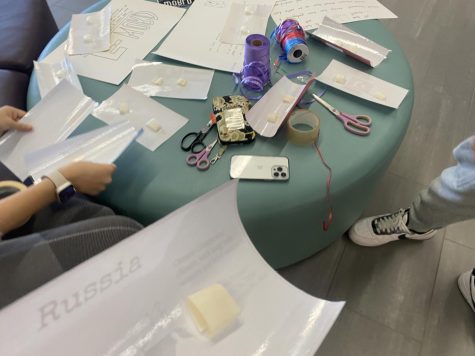
Students from countries other than the United States feel as if their peers do not know what country they are from. They do not feel represented or like people know who they truly are and where they are from.
Sophomores Glenda Zhiminaicela and Paola Lopez discussed the importance of knowing the difference between Hispanic speaking countries. Glenda, who was born in Ecuador, said, “I don’t like how we were only taught one specific way and if we tried to use our way, which is still Spanish, they would tell me it was wrong.” Glenda feels as if she is categorized as one place, that being Mexico, and can only speak the way Mexicans speak and learn Spanish their way.
The Spanish taught at Morgan is traditional Spanish that people speak in countries like Mexico instead of Castellano which is used in countries such as Spain.
She said, “when you’re Hispanic and people look at you, they think you’re Mexican.”
Glenda said there are differences in words, but also in lifestyle. She claimed, “We do not celebrate Dia De Los Muertos the way Mexicans do. We have Carnival.” She also said, “We bake a little bread that looks like a baby in a blanket, that is like our offering. It is not a big thing like candles and photos and flowers everywhere.”
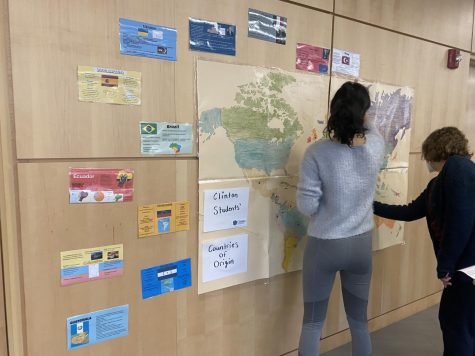
Paola also shared the tradition of baby in a blanket. She said, “we make a baby out of bread and honor our ancestors.” Paola said, “I was robbed of two things, day of the dead and my accent.”
One big difference in culture she mentioned was when she said, “We speak Castellano. We have different accents. Different regions have different accents.” Castellano is not the same as Spanish because it came from a Castile area in Spain and spread to other Hispanic speaking countries that speak differently than Spanish. This is a very similar language, except Castellano emerged from Latin.
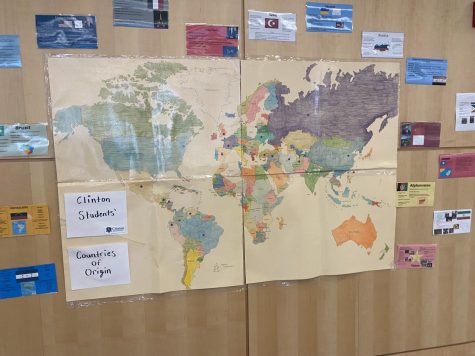
Glenda stated, “I want to represent my country not being categorized as one country, Mexico.”
Paola feels similarly to Glenda. She said, “the only Hispanic representation is Mexican.” She feels like there is a lack of representation or information about Latino countries. Even the media only refers to Mexico.
Students from the Social Justice Club shared their thoughts on the importance of this map.
Junior Muntara Singh said, “I think the map is really important for us students to learn about each other and how diverse Morgan really is. As we were placing stickers on each country of origin of our students, I was amazed at how many countries there were. By the end, there was a whole constellation of our backgrounds, and I was really impressed.”
Muntara also claimed, “I wonder how many more places would be marked if we included students’ parents’ countries of origin. Speaking on behalf of the first-generation immigrant students here at Morgan, I know there are a lot of us.”
Freshman Josephine Simon said, “I think it is important to have the map upstairs in the upper hub because it just shows where all the people are from in Clinton and how diverse the Clinton Public Schools are, so it is good to be aware.”
The map is worth checking out, and it provides an opportunity to learn where your classmates are from.


